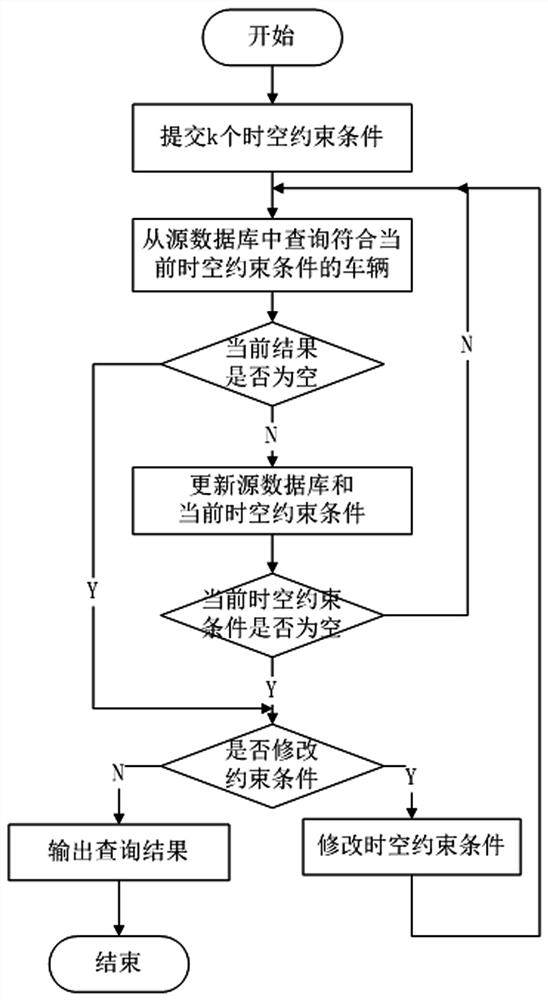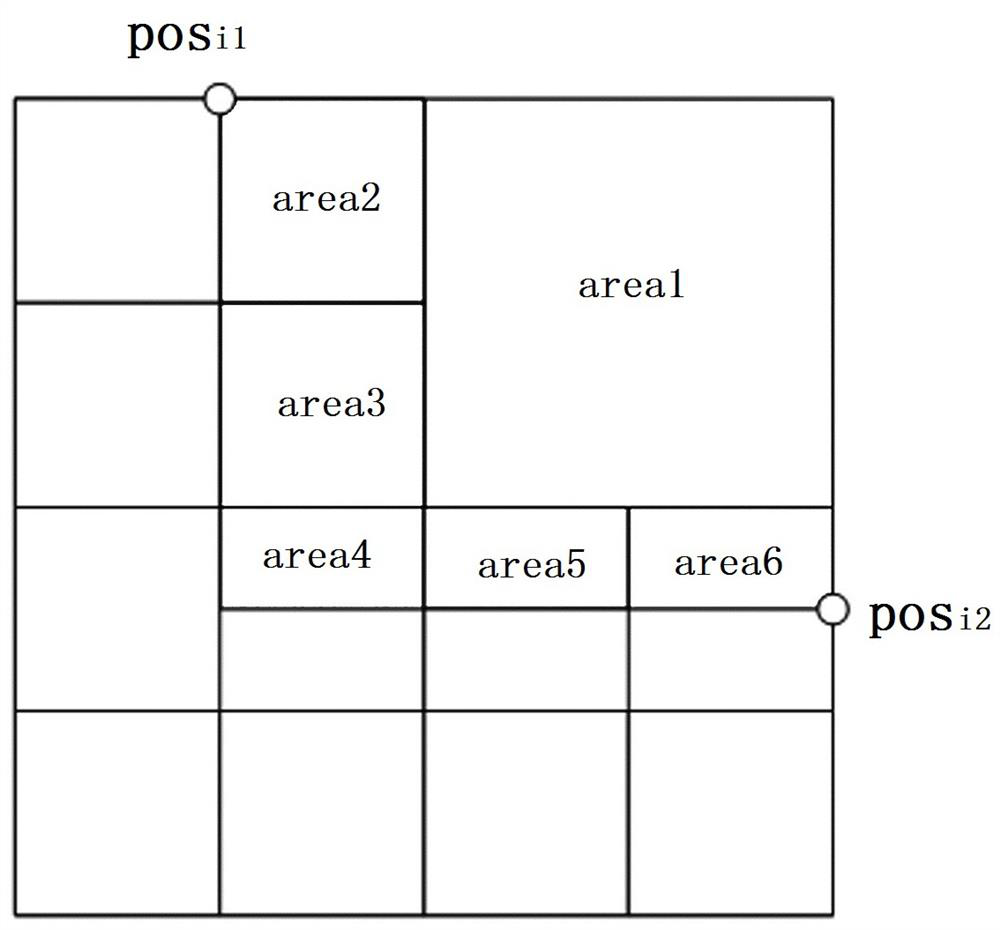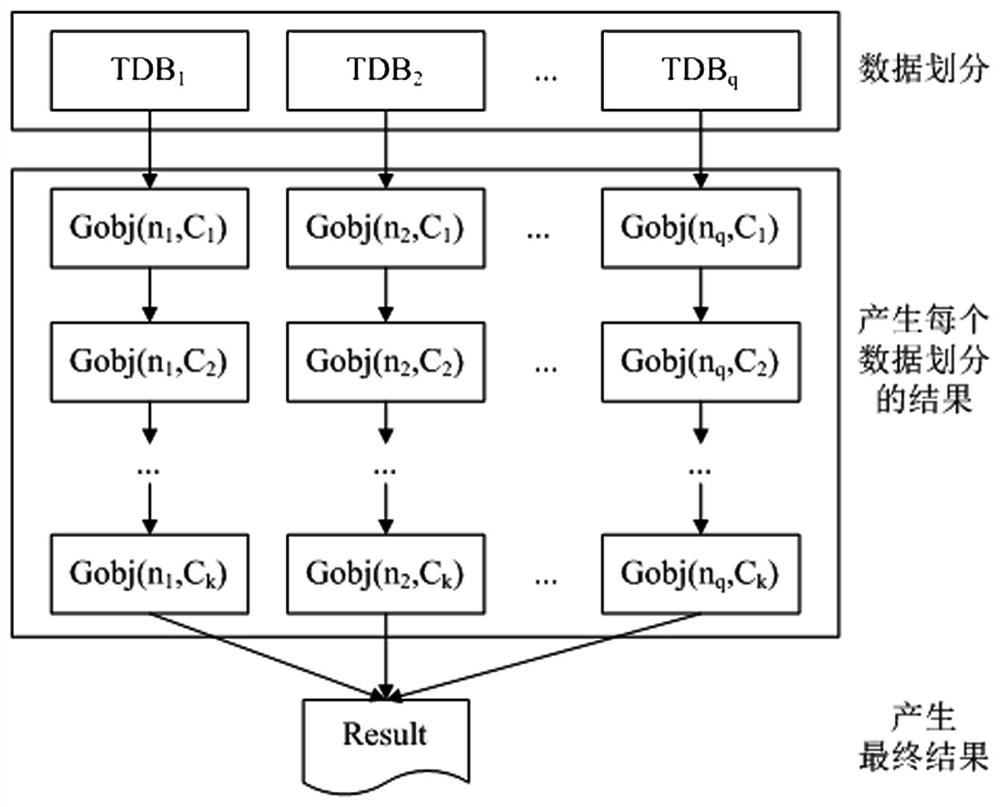A Suspicious Vehicle Discovery Method Based on Spatiotemporal Range Constraints
A discovery method and spatiotemporal technology, applied in the field of suspicious vehicle discovery based on spatiotemporal range constraints, can solve problems such as unclear location information, inability to efficiently discover no typical external features, etc., to achieve the effect of improving efficiency
- Summary
- Abstract
- Description
- Claims
- Application Information
AI Technical Summary
Problems solved by technology
Method used
Image
Examples
Embodiment Construction
[0029] The solution of the present invention will be described below through specific implementation examples and in conjunction with the accompanying drawings.
[0030] Assuming that each vehicle obj during exercise t time passing location p When the system generates a record ( obj,t, p ), the format of each spatiotemporal constraint is C =( T 1 , T 2 , pos 1 , pos 2 ),in T 1 with T 2 represents time, and T 1 ≤ T 2 , pos 1 =( x 1 , y 1 )with pos 2 =( x 2 , y 2 ),x 1 with x 2 Indicates the position pos 1 with pos 2 longitude, y 1 with y 2 Indicates the position pos 1 with pos 2 latitude to position pos 1 with pos 2 The rectangular area formed by the diagonal vertices is denoted as Area ( C ). If the object obj exist t time zone Area ( C ), ie , then the object obj Satisfy the conditional space-time constraints C , denoted as .
[0031] For a certain suspect, it is usually possible to infer the appr...
PUM
 Login to View More
Login to View More Abstract
Description
Claims
Application Information
 Login to View More
Login to View More - R&D
- Intellectual Property
- Life Sciences
- Materials
- Tech Scout
- Unparalleled Data Quality
- Higher Quality Content
- 60% Fewer Hallucinations
Browse by: Latest US Patents, China's latest patents, Technical Efficacy Thesaurus, Application Domain, Technology Topic, Popular Technical Reports.
© 2025 PatSnap. All rights reserved.Legal|Privacy policy|Modern Slavery Act Transparency Statement|Sitemap|About US| Contact US: help@patsnap.com



